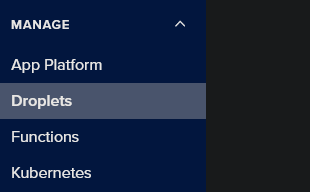Hosting SilverBullet.md read-only & admin with Docker, DigitalOcean, Cloudflare, and NGINX
Admin and read-only SilverBullet.md setup using Docker, Cloudflare reverse proxy, a DigitalOcean droplet, and NGINX while sharing the same data source. - Blog by SH3LL


Hosting SilverBullet.md read-only & admin with Docker, DigitalOcean, Cloudflare, and NGINX.
This guide will walk you through my personal codex infrastructure using SilverBullet.md, Cloudflare reverse proxy, a DigitalOcean droplet, and NGINX. I will also provide an out-of-the-box method for having a locked-down public read-only site while still having the ability to access admin using the same source files. - Blog by SH3LL
Connect with me!INTRODUCTION
Thanks for tuning in to my blog! We are going to be setting up a self-hosted SilverBullet.md PKM. This guide will walk you through from start to finish. We will have a public-facing read-only SilverBullet instance that shares the same source directory as our admin password-protected SilverBullet instance. This allows us to have a site domain.com that we can share, but no one can alter or run commands. However, we will be able to access the admin.domain.com SilverBullet instance and make notes and configuration changes that are instantly reflected on the read-only site. Additionally, we will setup a Watchtower container that will automagically update our docker images.
We are going to use the following:
- A Digital Ocean Ubuntu Droplet
- Cloudflare Reverse Proxy/Origin Certificates
- Cloudflare Zero Trust Access for admin silverbullet
- Official NGINX Docker Container
- Two Official SilverBullet.md Docker Containers
- Official Watchtower Docker Container
This guide assumes you have a decent understanding of Linux, a good amount of patience, and some basic troubleshooting skills. I will try to lay everything out for you the best I can.
Additionally, I will provide some basic steps to harden your droplet and docker setup. This is by no means the most secure build, but a decent baseline based on what I've learned. I highly recommend you do additional research to further secure your setup as needed such as SSH MFA, IPS/IDS, etc..
DEPLOY DROPLET
- If you haven't already, create a Digital Ocean account. Once logged in, on your dashboard find the "Droplets" tab, under the "Manage" category, on the lefthand navigation plane.

Creation
- Next, let's click "Create Droplet."
- Choose the closest region to you, or the region where a majority of your users are located.
- Under "Choose an image" we are going to use Ubuntu 24.04 (LTS) x64 for this guide.
- Under "Droplet Type" we used "Basic" (optional).
- Under "CPU options" we chose "Premium AMD" (optional) and 2GBmem/1cpu (minimum).
- Under "Choose Authentication Method" select "SSH Key."
Let's create a key
On the device you are going to use to access your droplet, use this guide to create a key pair. This works on both Linux CLI (Command-line interface) and Windows Powershell and is a modern, secure key that works on most systems.
Upload the public key
Now that the keys have been generated and the private key has been added to the authentication agent, we can copy the contents of our public key and add it to the Digital Ocean droplet setup.
- Click on "New SSH Key" in the droplet setup menu.
- Paste the content of your full public key, making sure there is no whitespace or additional formatting.
- Add a friendly name.
- Click "Add SSH Key."
Finalize
Now let's finish up our setup with the last few options.
- Under "We recommend these options" I recommend selecting "Add improved metrics monitoring and alerting (free)."
- Under "Hostname" choose your desired droplet name.
- Click "Create Droplet" at the bottom right.
Access
Now, from your local device, open up a powershell or terminal window as admin and connect to your droplet. In your Digital Ocean panel, you will see an IP for your Droplet. Use the IP in the following command:
ssh root@IP
if you run into issues, try to manually provide your private key (not the one that ends in .pub) with the following command:
Linux
ssh -i "/path/to/private/key" root@IPWindows
ssh -i "\path\to\private\key" root@IP
Now, if you password-protected your private key, supply the password and you should now have a root shell on your droplet.
HARDENING DROPLET
My basic hardening guide can be referenced here.
Follow everything but ignore the "UFW setup" portion of that hardening guide and, instead, use this one:
UFW setup
We are going to be using UFW for this guide, it is easy to use and setup and does its job well.
- Install ufw if not already installed.
sudo apt install ufw
- Install openssl.
sudo apt install openssl
- Allow ssh.
sudo ufw allow ssh
- Allow 80/443 tcp.
sudo ufw allow 80/tcp
sudo ufw allow 443/tcp
- Enable ufw.
sudo ufw enable
- Do not disconnect from your SSH session in case something went wrong. This is a good time to open a new terminal and verify you can still connect via SSH.
SETTING UP DOCKER APPLICATIONS
Since docker changes quite frequently, I'm going to refer you to the official documentation for installation. You will need to install docker engine and docker compose. Since docker does change, and there are multiple ways to install it, you may have to transpose some of these commands to the correct/modern syntax depending on when you are reading this guide.
Initial Environment
Now that docker engine and docker compose are installed, we can work on getting the docker environment setup.
Create a docker user
Let's first create a docker user so the containers aren't running under a privileged user.
- Create new user:
dockeruserand add to docker group.
sudo adduser dockeruser
sudo usermod -a -G docker dockeruser
- Create a SilverBullet directory and add correct permissions/ownership for our dockeruser. We will use
sbfor our directory throughout this guide.
sudo mkdir /etc/docker
sudo mkdir /etc/docker/sb
sudo chown dockeruser:dockeruser /etc/docker
sudo chown dockeruser:dockeruser /etc/docker/sb
sudo chmod 770 /etc/docker
sudo chmod 770 /etc/docker/sb
- Switch to the docker user.
sudo su dockeruser
- Find the PUID of the dockeruser and take note of it. We will need it for the docker-compose.yml.
id -u dockeruser
- Find the PGID of the dockeruser and take note of it. We will need it for the docker-compose.yml.
id -g dockeruser
Directory & File Setup
- Navigate to the SilverBullet directory.
cd /etc/docker/sb
- Create a docker-compose.yml file.
touch docker-compose.yml
- Create a keys directory.
mkdir keys
- Create an NGINX directory.
mkdir nginx
- Create a SilverBullet space directory.
mkdir space
- Navigate to the nginx directory and create a nginx.conf file.
cd /etc/docker/sb/nginx
touch nginx.conf
- Navigate to the keys directory and create your .pem files.
cd /etc/docker/sb/keys
touch origin.pem
touch key.pem
Your directory and files should look like this:
sb/
├── nginx/
│ └── nginx.conf
├── keys/
│ ├── origin.pem
│ └── key.pem
├── space/
└── docker-compose.yml
docker-compose.yml Setup
- Navigate to the sb directory.
cd /etc/docker/sb
- Edit the
docker-compose.ymlfile.
nano docker-compose.yml
Here is an example of how we have our docker compose yaml configured:
services:
nginx:
image: nginx:latest
container_name: nginx
restart: always
environment:
- PUID=1000 # User ID (replace with dockeruser PUID)
- PGID=1000 # Group ID (replace with dockeruser PGID)
ports:
- "80:80"
- "443:443"
volumes:
- ./nginx:/config/nginx
- ./keys:/config/keys
- ./nginx/nginx.conf:/etc/nginx/nginx.conf
depends_on:
- sbpublic
- sbadmin
networks:
- default
- internal
sbpublic:
image: zefhemel/silverbullet:latest
container_name: sbpublic
restart: always
environment:
- PUID=1000 # User ID (replace with dockeruser PUID)
- PGID=1000 # Group ID (replace with dockeruser PGID)
- SB_READ_ONLY=true
ports:
- "127.0.0.1:8000:3000"
volumes:
- ./space:/space
networks:
- default
- internal
sbadmin:
image: zefhemel/silverbullet:latest
container_name: sbadmin
restart: always
environment:
- PUID=1000 # User ID (replace with dockeruser PUID)
- PGID=1000 # Group ID (replace with dockeruser PGID)
supported)
- ADMIN=true
ports:
- "127.0.0.1:9000:3000"
volumes:
- ./space:/space
networks:
- default
- internal
watchtower:
image: containrrr/watchtower
container_name: watchtower
restart: always
environment:
- PUID=1000 # User ID (replace with dockeruser PUID)
- PGID=1000 # Group ID (replace with dockeruser PGID)
- WATCHTOWER_CLEANUP=true
volumes:
- /var/run/docker.sock:/var/run/docker.sock
networks:
- default
- internal
depends_on:
- sbpublic
- sbadmin
- nginx
networks:
default:
internal:
internal: true
The SilverBullet containers are mapped only to ports accessible on localhost and are not exposed to the outside world. I designed the config this way so that no one can bypass nginx. They are forced to go through nginx in order to route to the localhost.
Be sure to update all PUID and PGID entries with the dockeruser's IDs respectively. Additionally, confirm that all your paths are mapped correctly per your configuration. If you followed my schema, then this should already be good.
Configuring nginx
- Navigate to the nginx directory.
cd /etc/docker/sb/nginx
- Edit the
nginx.conffile.
nano nginx.conf
Here is what our nginx config file looks like:
worker_processes auto;
events {
worker_connections 1024;
}
http {
upstream sbpublic {
server sbpublic:3000;
}
server {
listen 80 default_server;
listen [::]:80 default_server;
server_name _;
return 444; # Connection closed without response
}
server {
listen 443 default_server;
listen [::]:443 default_server;
server_name _;
ssl_reject_handshake on; # Reject SSL connection
}
server {
listen 80;
listen [::]:80;
server_name domain.com;
return 301 https://$server_name$request_uri;
}
server {
listen 443 ssl;
listen [::]:443 ssl;
server_name domain.com;
ssl_certificate /config/keys/origin.pem;
ssl_certificate_key /config/keys/key.pem;
ssl_dhparam /config/keys/dhparams.pem;
ssl_protocols TLSv1.2 TLSv1.3;
ssl_ciphers HIGH:!aNULL:!MD5;
ssl_prefer_server_ciphers on;
gzip on;
client_max_body_size 4G;
location / {
# Proxy connections to the application servers
proxy_pass http://sbpublic;
proxy_redirect off;
proxy_set_header Host $host;
proxy_set_header X-Real-IP $remote_addr;
proxy_set_header X-Forwarded-For $proxy_add_x_forwarded_for;
proxy_set_header X-Forwarded-Host $server_name;
}
}
}
This config is set up to deny any incoming requests that are not going to domain.com and forwards all http traffic to https and then to the public SilverBullet's container port on localhost. You will need to replace every occurrence of domain.com with your actual domain. This can be easily done by copying the config into a source-code editor like Visual Studio Code and using the find and replace feature.
CLOUDFLARE
If you haven't already created a cloudflare account, you can create one here.
Once logged in, you will need to add your domain to cloudflare. You can reference their documentation.
Once your site is added, navigate to your website in the cloudflare dashboard.
- Under the DNS tab, we need to create two "A" records pointing to the IP address of your droplet. For the root domain name put
@ordomain.com. For your admin subdomain just putadminfor the A record's name. Make sure that the proxy is toggled on for both records. - Under the SSL/TLS main tab, make sure current encryption mode is set to "Full (strict)". Then navigate to the "Edge Certificates" child tab and enable "Always use HTTPS."
- Still under the SSL/TLS section, find the "Origin Server" tab. Create a new origin certificate. You can use a wildcard
*.domain.comto cover all your subdomains. During setup, make sure you download or copy the contents of the certificate and the key and name them accordingly because we will need to be able to distinguish between the key and the origin cert later.
Setting up keys
In the keys directory, we are going to insert our cloudflare origin and key files.
- Make sure you are in the correct directory.
cd /etc/docker/sb/keys
- Copy the contents of your origin cert to the origin.pem.
echo "content of origin cert goes here in quotes" > origin.pem
- Copy the contents of your key to the key.pem file.
echo "content of key goes here in quotes" > key.pem
In the same keys directory, we need to generate our Diffie-Hellman parameters.
- Generate dhparams.pem.
openssl dhparam -out ./dhparams.pem 4096
- Verifiy dhparams was generated.
ls -la
Zero trust access
Cloudflare zero trust access is a bit tricky to setup. Here is an overview of what we need to do.
- Install cloudflare tunnel connector on droplet
- setup tunnel
- create an access application
- setup an authentication mechanism
-
Login to cloudflare, select your domain, navigate to Access > Launch Zero Trust.
-
Setup your zero trust account by filling out the prompts.
-
Inside the trust center, navigate to Networks > Tunnels.
-
Click "Create a tunnel."
-
Select "Cloudflared."
-
Give your tunnel a fitting name.
-
On the "Choose your environment" section, select "Debian" and then "64 bit."
-
Cloudflare will provide you a command to setup your tunnel. Enter that command on your droplet's shell.
-
Once you run the command, verify that it shows connected on the Cloudflare page.
-
Next, fill out your public hostname details. For example:
subdomain: admin
domain: domain.com
type: http
url: 127.0.0.1:9000 (your admin silverbullet localhost docker IP)
-
Under the public hostname details, click on "Additional application settings" and make sure everything is disabled.
-
We don't need to put anything in the "Private network" section. Finish the setup and save.
-
Still in Cloudflare Zero Trust Center, navigate to Settings > Authentication.
-
In the "Logon methods" section click "Add new."
-
Choose an identity provide and follow the provided instructions to setup.
-
Still in Cloudflare Zero Trust Center, navigate to Access > Applications.
-
Click "Add an application."
-
Click "Self-hosted."
-
Give your application a fitting name.
-
Set duration to how long you a logon session to last before prompting you to log back in.
-
Set your domain details. For example:
subdomain: admin
domain: domain.com
-
Scroll down to "Identity providers" and make sure the identity provider you setup is enabled.
-
Leave the other settings as default.
-
Click next.
-
Add a new policy name that is fitting.
-
Set action to "allow."
-
Scroll down to "Configure rules."
-
Setup rule to allow your identity provider information. For example (if identity provider accepts emails):
selector: emails
value: [email protected]
-
Save and move to the settings tab.
-
Make sure all settings in this section are disabled.
FINISHING UP
Now that everything is configured, we can compose the docker application.
- Navigate to the root SilverBullet directory.
cd /etc/docker/sb
- Compose the docker application.
docker compose up -d
Once the application is up, you should now be able to access your SilverBullet platforms. Please note that DNS records take some time to propagate. If you are unable to access your sites please wait a few hours and try again. If you have any issues, please join our discord, we are happy to assist. If you found any issues with this guide, please let me know in the comments below and I will get it corrected.
If you need to troubleshoot, you can check the docker compose logs or use SSH tunneling to the localhost port for one of the SilverBullet apps. Then add a custom hosts file (linux | windows) entry to map the FQDN in order to view the app on your system's browser.
Thanks for reading!
- SH3LL







